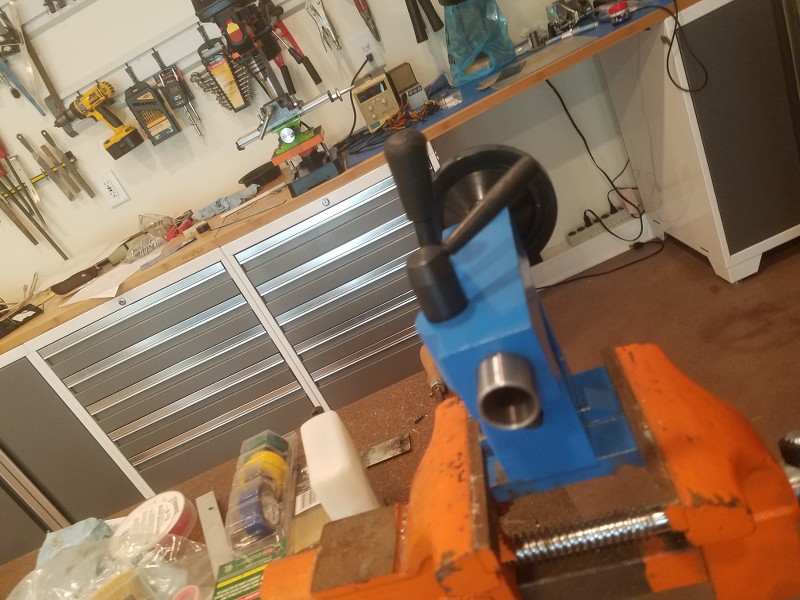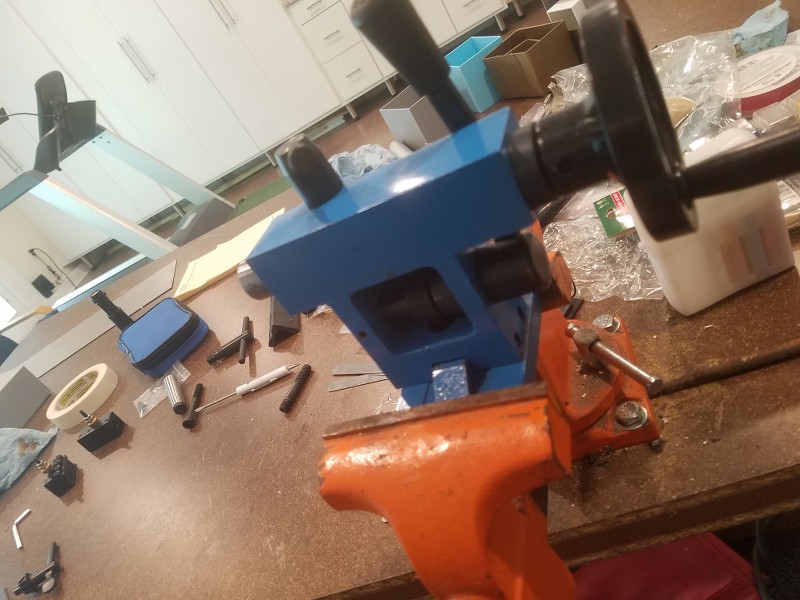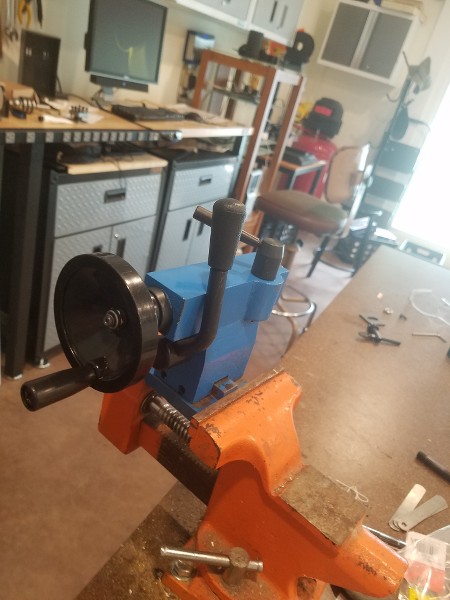Ummmmm....
I can't remember if you said you painted your lathe. If it came to you painted the way it is it looks like there is paint on the ways, which should not be the case. It looks like the seller was covering up some issues or was just wanting to pass on a poor example of this lathe. It is possible you have lots of things that add up to an unfortunate amount of grief for you.
If there is someone near you who has one of these lathes and lots of experience they may be able to look at yours, or you may be able to look at theirs....
If you put a general idea of your location in your profile so it shows on your posts perhaps it will help find someone.
If you're all alone with this, then looking at what you find online is useful, but take a lot of it with a grain of salt and consider what the aim of each online source was in working on their problem.
It looks like it is time to take a break for a period of time, then come back. It may be time to start over with new measurements of "Everything" and a piece-by-piece study of each component to see what all the problems are. You will need some good measurement devices and some time to consider what they are really telling you.
It can be done, to a degree that will probably make this a usable machine for you where you are right now, but it will not make it into a Hardinge, a Monarch, or a Schaublin.
To get back to your issues, I suspect you may have a poor example of the tailstock, or one that has issues that will be found with a teardown and careful analysis of it's construction. I do not recommend you go wild with any cutting tools trying to take off large amounts of metal. You will probably make things worse if you do. Filing and sanding will take away any flatness and precision from mating surfaces. Take your tailstock apart to understand how the lock mechanisms work: Does "locking" a setting move things over, up, or down? Why? How?
You show your tailstock at the extreme end of the bed. I understand that makes the photo clear as an illustration, but did you check at other distances from the headstock? I suspect you may also have a twisted or "bellied" bed. It has been mentioned many places that cast iron "seasons" with time and in the old days castings were put out to do so for months, then rough machined, then kept around before final machining and assembly. The manufacturers of our low-cost machines do not have the luxury of the time to do all of this, so the parts continue to change before and after we purchase them.
And I have not even mentioned that said manufacturers have not built wastage into their budgets. Every casting may get used, even if it is full of voids and inclusions. The saddle of my mini-lathe had a void that ran from the V-cut up to the top, but it was covered by the cross-slide, so I never would have found it without disassembly. I also have a set of "precision" V-blocks that have holes in them that have been filled with lead or solder, then buffed over.
I think you are on the path to sorting things out. Do not give up, but take some time to think about what might be going on before going hog-wild with mods. You can easily end up "chasing your tail" with these things.
--ShopShoe





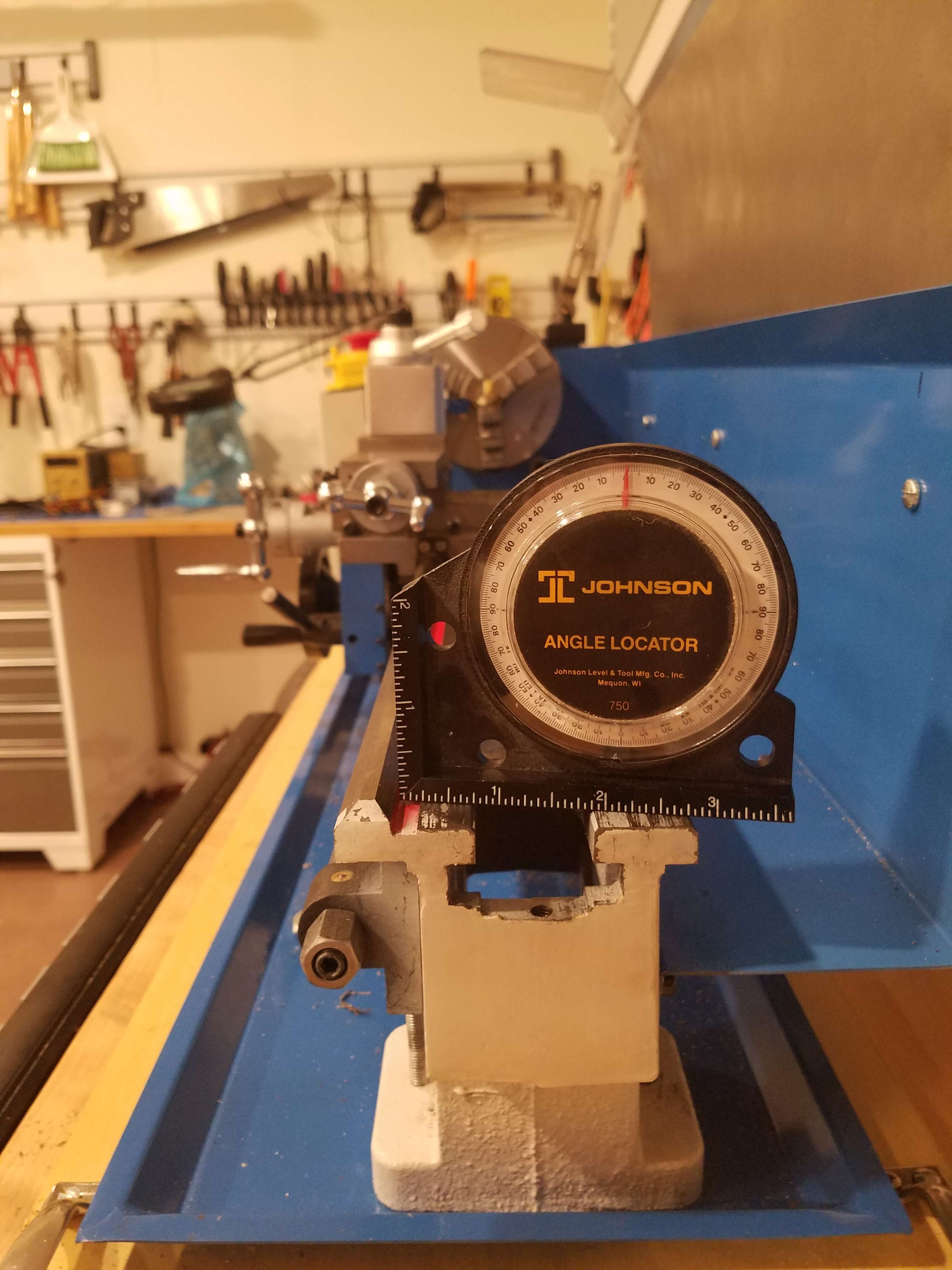
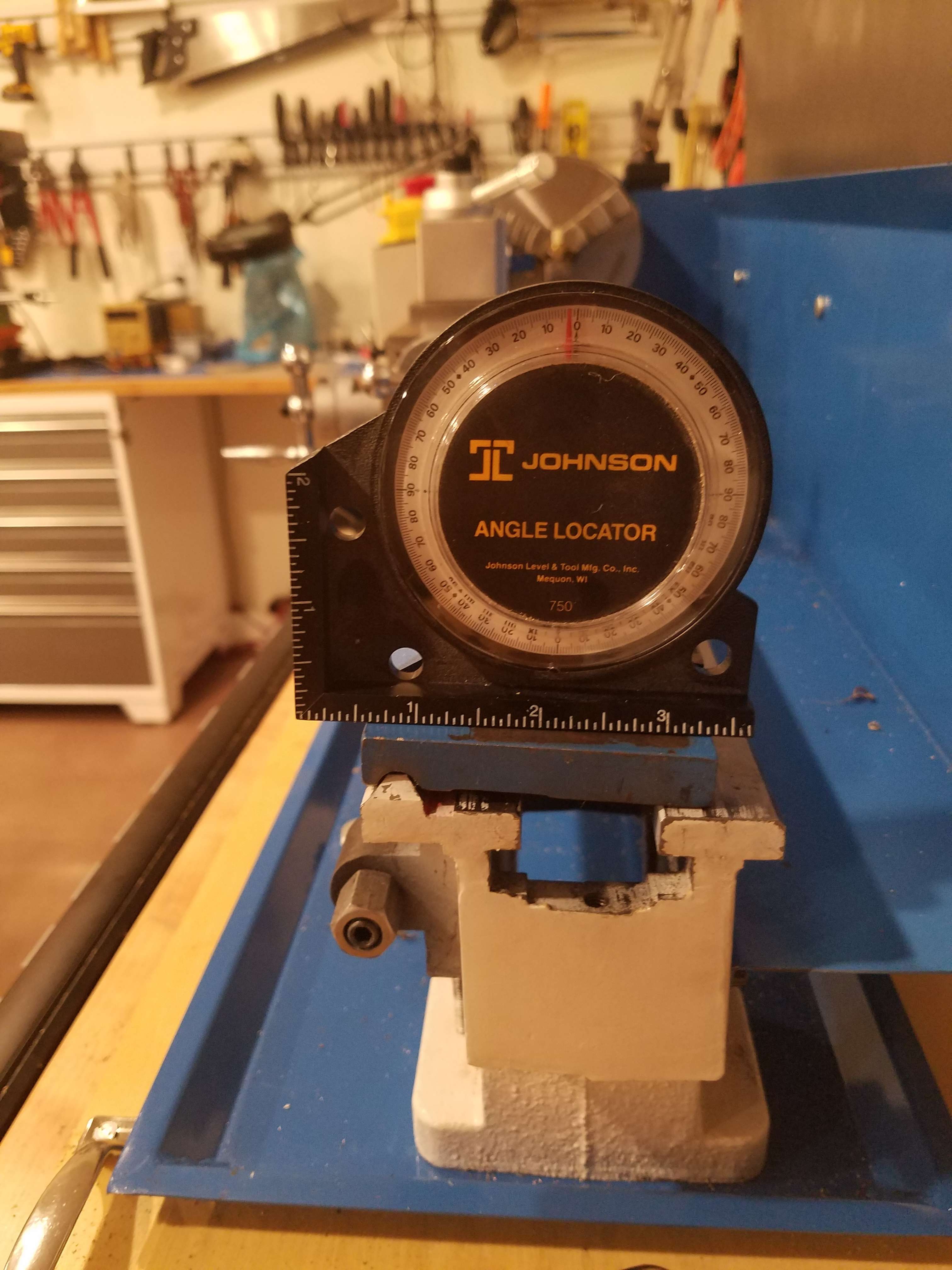












![TurboCAD 2020 Designer [PC Download]](https://m.media-amazon.com/images/I/51UKfAHH1LL._SL500_.jpg)


![DreamPlan Home Design and Landscaping Software Free for Windows [PC Download]](https://m.media-amazon.com/images/I/51kvZH2dVLL._SL500_.jpg)





























![[The Haynes GM, Ford, Chrysler Engine Performance Manual: The Haynes Manual for Understanding, Planning and Building High-Performance Engines (Haynes Techbook)] [Author: Haynes, Max] [August, 2008]](https://m.media-amazon.com/images/I/51x6eyiUHhL._SL500_.jpg)
















